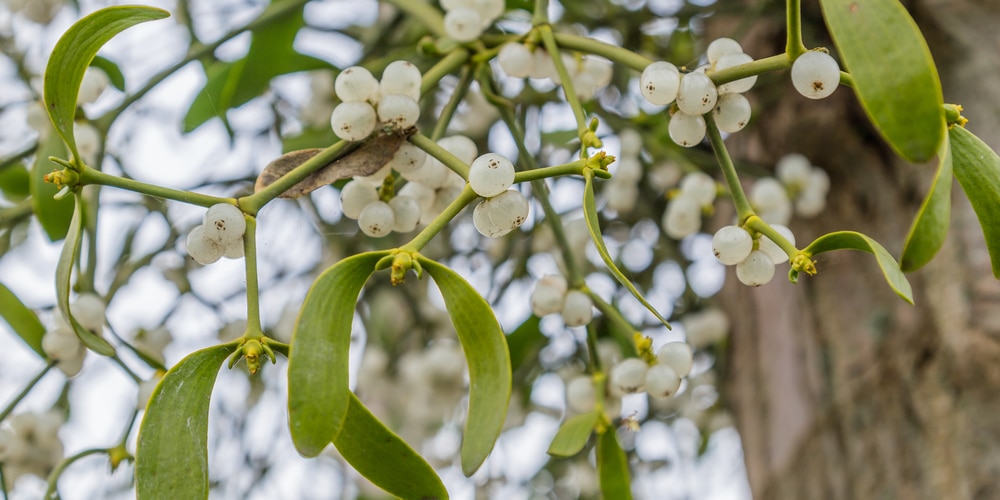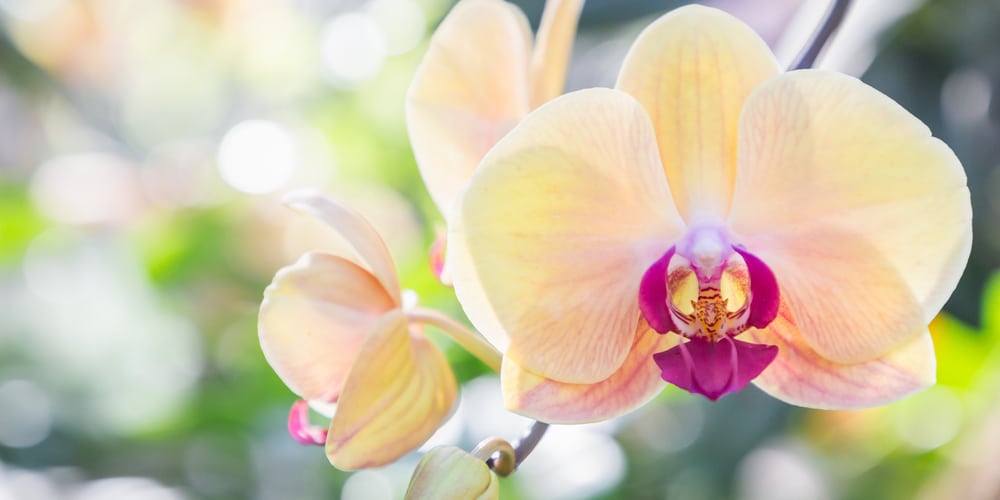There are many species of orchids, some rare and beautiful and others more common. Orchids are often collected by plant loves as they are prized for their attractive flowers and the unique way they grow.
You may have heard that orchids are parasites as they grow on other living organisms. Whether or not orchids are a parasite is a topic widely discussed by scientists, botanists, and plant enthusiasts globally.
It’s often a controversial subject, and many people believe that it’s a myth that orchids are parasites. To answer the question, ‘are orchids parasites?’ we first need to understand the definition of a parasite. Let’s look at precisely what a parasite is and whether orchids fall into this category.
First: What is a parasite?
A plant, insect, or animal is considered a parasite if it lives either in or on another species, known as a host and benefits by getting its nutrients at the host’s expense. There are many examples of parasites in nature, including intestinal worms that live inside cattle, lice on human hair or animal fur, and tiny fish that live in the mouths of other sea creatures. Sometimes parasites are good and help contribute to the survival of their hosts, while in other instances, they cause serious infections to develop and eventually kill the host.
Are Orchids Parasites?
It’s a misconception that orchids are parasites. Many people think they are as in the wild orchids grow from the branches of trees. Some orchids wrap themselves around tree trunks or cling onto bushes. Some orchids are considered parasitic in nature, while others are classed as semi-parasitic. However, most orchid species are epiphytes and air plants rather than being parasites.
An epiphyte is a word that’s used to describe plants that grow on top of another plant. Orchids cling to trees and other plant species, but as they don’t take their nutrients from the tree or harm the tree in any way, they are not considered parasites.
Orchids are referred to as air plants as they can absorb all the nutrients and moisture they need to thrive from the air surrounding them. They stay healthy by taking energy from the sunlight rather than nutrients from the soil, as most plants do.
While orchids living outside in the wild can get all the nutrients and water they need from the air and sun, orchids growing in the home require proper ventilation if they are to thrive.
Orchids often hang high up in tree branches, and rather than getting nutrients from the tree itself, they can get everything they need to survive from their surroundings. This includes not only from the air and sun but also from dead leaves and bird droppings. Orchids can’t be classified as parasitic just because they choose to attach themselves to trees.
Related: Most Expensive Plants
Parasitic orchids
While most orchids aren’t parasites, some are known as parasitic orchids as they partner up with fungi to survive. These types of orchids rely on their fungi partners to provide them with a food source.
Some rarer species of wild orchids cannot create their own food by photosynthesis as most other plants do. They have to rely on fungi that grow on their roots to make food for them. These types of orchids are parasites as they get nutrients from and damage the fungi.
Some plants, such as mistletoe, are parasites as they damage their host plant. Orchids cling to trees and, in some cases, are actually beneficial to the tree as they can reduce fungal infection. The host tree is considered something for the orchid to hold onto so that it can thrive rather than being something that they’ll steal nutrients from.
A few rare species of orchids feed off their host tree and are considered either parasitic or semi-parasitic. These orchids belong to a botanical family known as Corallorhiza and are only found in the wild.
Parasitic plants

For a plant to be considered parasitic, it needs to get some or all of its nutrients from another living plant. Only about one percent of the world’s plants are parasites, and they are found in all biomes. Parasitic plants have a modified root system known as haustoria, which can penetrate the host plant. This root pierces the host to reach its xylem or phloem.
Scientific research shows that parasitic plants emit a perfume with a slight plastic aroma which attracts insects and small mammals to pollinate the flowers. Globally there are known to be over 4,000 species of parasitic or semi-parasitic plants. For example, in South Africa, there’s a plant called Cytinus visseri, which buries itself into host shrubs to obtain a supply of chlorophyll.
Corpse flower
One of the most famous parasitic plants is the corpse flower, which is sometimes called the monster plant. This parasitic plant is native to Borneo and has the world’s largest flower. The flower smells like rotten meat and has a diameter of over two feet.
Mistletoe
Mistletoe is a sought-after seasonal plant that is used as decoration at Christmas time. It has white berries and commonly lives on the branches of birch trees. This parasite can sometimes attach itself to other trees, bushes and shrubs. Mistletoe is considered a semi-parasitic plant as it does feed off the host tree by inserting roots into the branches. However, mistletoe plants are also able to sustain themselves through the photosynthesis process.
Conclusion
Orchids are a versatile and resilient plant; they thrive in places that other plants would perish as they can get their water and energy from the air. Orchids can thrive almost anywhere in the world and attach themselves to trees, shrubs, and bushes. This has led to the misconception that orchids are parasites. Most species of orchids aren’t considered parasites as they get their nutrients from the air rather than their host plant. There are, however, a few species of orchids in the wild that are considered parasitic or semi-parasitic.
Did you know? While the average orchid cost is relatively cheap, some of them can get downright expensive.
